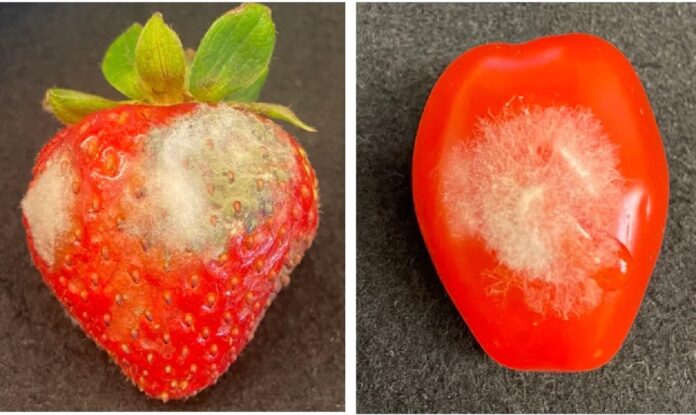A mold that infects berries, tomatoes, and most other fruits and vegetables, causing billions in crop losses every year. A fungus called gray mold causes billions of crop losses annually, affecting over 1,400 plant species without a cure.
Researchers have identified a way to eliminate mold without harming toxic chemicals in crops. They have discovered that lipid “bubbles” secreted by mold cells play a significant role in communication between pathogens and their hosts, including fungi, bacteria, and mammals.
Gray mold has developed the ability to use these bubbles to infect its hosts. Researchers discovered that harmful RNA from gray mold is secreted in these lipid-based bubbles and that the protein tetraspanin helps the formation of these bubbles. The mold lost its capacity to produce tetraspanin, which prevented it from secreting and releasing bubbles. Researchers hope this discovery will help them develop new “RNA fungicides” to inhibit grey mold development. The role of these lipid bubbles, also known as extracellular vesicles, has been discarded for decades because they are hard to isolate.
Hailing Jin, a microbiology and plant pathology professor at the University of California Riverside, said. “Now we know the mold, just like its plant hosts, also uses extracellular vesicles to protect and deliver what amount to weapons small RNA molecules that silence genes involved in plants’ immune systems.”
Humans and animals can easily digest RNA, and it destroys rapidly in the environment without leaving harmful residues. It is second only to Magnaporthe as the world’s most damaging fungus for food crops. Gray mold is treated mainly with fungicides, which can negatively impact human and animal health.
Researcher said. “If we knock out this key component of the vesicles, we can attenuate their ability to deliver the weapons of small RNAs or other molecules that suppress host immunity.”
An eco-friendly RNA-based fungicide that blocks the capacity of Magnaporthe and other fungal diseases to generate extracellular vesicles may also be effective against Magnaporthe and other fungal pathogens.
The researchers are excited to discover new eco-friendly methods of maintaining the global food supply that may be widely applicable due to climate change.
Journal Reference:
- Huan Wang,Angela Chen, et al.Fungal small RNAs ride in extracellular vesicles to enter plant cells through clathrin-mediated endocytosis. Nature Communications. DOI: 10.1038/s41467-023-40093-4
